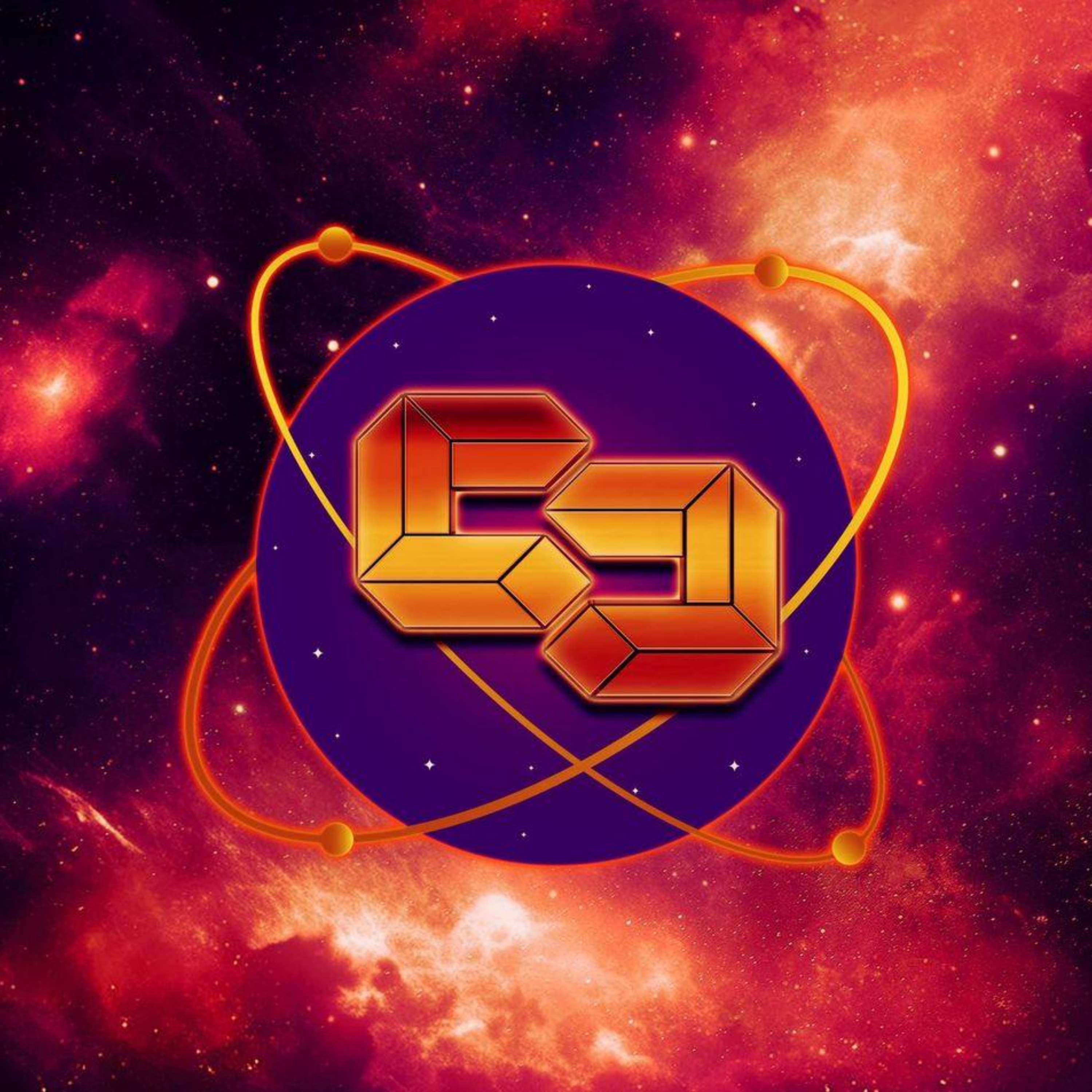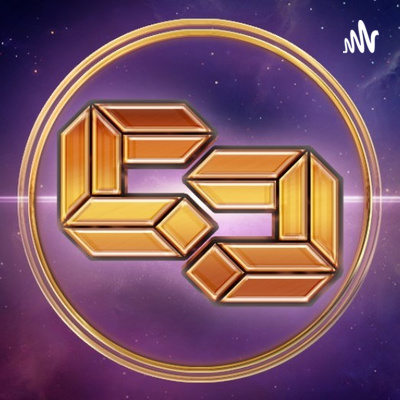[00:00:00] Speaker A: Hi, and welcome to another edition of the Cosmic, the companion interview podcast, the Cosmic Circle. I'm Isla Ruby, and today we have a special treat for Marvel fans over Zoom. We sat down with Echo director Sydney Freeland to chat all things Echo and Maya Lopez listen on for our full chat. Enjoy.
[00:00:25] Speaker B: Hi, it's nice to meet you.
[00:00:27] Speaker C: Hi, nice to meet you.
[00:00:29] Speaker B: I'm such a fan of Echo and a strange new world, so I'm really excited to talk.
[00:00:33] Speaker C: Oh, thanks.
[00:00:34] Speaker B: I would love to talk about, you know, how you kind of got onto the Echo project. You know, your journey to. Your journey to it.
[00:00:43] Speaker C: Yeah, I think, you know, obviously, the echo character for Spirit in the Hawkeye series, and, you know, that was, you know, Alaku Cox, you know, obviously phenomenal, amazing, fantastic.
That was the echo characters MCU appear sort of debut, but the character has been around since, like, 1998, you know, and she had her. She's interested in that, in that daredevil, daredevil run of hers. And, you know, so the character has been around for a while, and, you know, there's a little bit of built around her. And I think for myself personally, like, I was introduced to the concept in January of 2020. I know this because it was right before the lockdown, and I got an email from Burton Bertie, who co directed on Hawkeye. And I remember that email me and said, hey, do you know any deaf native american actresses? And I just wrote back, it's like, nope, good luck.
And I was like, that's very specific. And then that's. That's sort of like the first thing that I was became aware that they were going to do, bring Maya into the MCU.
And then obviously, when I came on board, then Hawkeye had already aired, and the real thing was with the Lockwood. Her sum total film experience was a few days on Hawkeye. So to go from that to being the lead of an entire Marvel series, you know, we shot for over 90 days, you know, in Georgia, and that's, you know, to be number one on the call sheet is. Is a massive responsibility, and it's a huge undertaking for, like, even for, like, the most seasoned actors, you know, so, but, you know, I mean, Alak would just. She, she rose to the challenge. You know, she rose to the challenge and excelled beyond anybody's wildest, you know, expectations.
[00:02:43] Speaker B: She was amazing. And, you know, the character is so much fun, too. So I'm, you know, I'm excited about that.
Can you talk about. So, you know, I want to get into the series a little bit more. Can you talk about you know, Maya's journey over these episodes, you know, where. Where do you think she starts and where does she end up? What, you know, what were kind of the goals with all of that?
[00:03:06] Speaker C: Yeah. You know, I think it was really thematically, it was really about this, like, exploration of the definition of family. Right, right. And that was, we always knew, like, when we were packing kind of a series, that we knew that was the kingpin Maya relationship was going to be at the heart of the series. Right. So there were, I mean, there were other aspects in there that were floating around, but we knew that was going to be the heart of the series. And then we also knew that she was going to go back to Oklahoma. And so, you know, once we had those two elements, and I think kind of what, what kind of presents itself for the corresponding series is that she comes in. What I love about the character and what I love about her in Hawkeye is that she was a villain, and I didn't want to shy away from that. I wanted to lean into that. I wanted to embrace the more visceral, gritty, sort of naturalistic elements of the character and so that we could totally make a departure from Hawkeye. Right.
But when we come into the series, she is a villain, and her. But thematically, she's more New York than she is Oklahoma at that point in her life, and she has a more New York sort of mindset and definition of family. Right. So she's fully sort of, like, ingrained in that kingpin kind of criminal underworld. And so her definition of family is a little more conditional. Right. So it's like, it's very much like you scratch my back, I scratch yours, you know? And so, but at the same time, it can be, you know, you can rise to the ranks, but then you can also be discarded as quickly as you can sort of, like, elevated, you know? And so I think it's, you know, obviously, she's excelling that environment to, you know, to the point of being the potential heir to Kingpin's empire. Right. And so that's where we're coming into this series. And then over the course of it, we're going to sort of challenge her definition of family and introduce some definition of it's a little more unconditional. That makes sense, you know, and so that's. And then with. And then introduce, like, the cultural aspects of that along with her biological family and sort of challenge her preconceived notions so that by the end of the series, she has a different definition of what family is or at least she's open to a different definition of family. And so that's really, like, what the sort of the broad series arc was for her character, her emotional arc and change is that, you know, like, I think I would like to think that she's, you know, by the end of the series, she's still very much capable of bad things, you know? And so if she starts off at a villain, you know, I don't want her to be Captain America. I want her to still have some grit and some, you know, maybe. I'd like to think that her ceiling is an antihero, you know, kind of like a, like a Wolverine type of, type of character still operates on the margins, you know? And so that's, that's, you know, I think that was in terms of her. Her over the course of the series, it was really, that was kind of her arc.
[00:06:00] Speaker B: That's awesome. Can you talk a little bit about the, you know, the conversations about, like, kind of grounding this project in, in the chop Shawn Nation?
You know, what the discussions were like with them and, you know, how, like, how that dialogue went about because, you know, there's the balance between, like, authenticity, accuracy. It's just so interesting.
[00:06:19] Speaker C: Yeah. Yeah. And it was, well, I think first and foremost, it was, you know, when I came on board, the character was Choctaw. Right. So one of the first things that was important for me was to engage the Choctaw Nation.
And, you know, really, it was all about doing two things. One was asking their permission, you know, which is not something that's always done with, with portrayals of indigenous peoples.
And the second was to create a dialogue, you know, and so you can have those intentions, but then you need to have the resources to back that up. And then, you know, thankfully, Marvel was behind us 110%. And so then, so we actually end up flying all of our department heads out to Oklahoma, and we all went to, took him to a POW because I'm trying to describe, I grew up going to powwow, so I'm trying to describe them to, to folks. But it was, you know, they got to see it firsthand. But more importantly, like, my costume designer got to see Powell outfits through her lens, my center chalkboard through her lens, my av through his lens, because he's going to have to organize the thing, you know, my production designer so on and so forth. But then we also got to meet with the Chalk foundation and, you know, and, you know, we were, you know, we tried to be very upfront with what we were doing. It's like, hey, listen, this character's a villain. She's got the bloody, violent back background, but the culture, her culture and tradition is one of the things that's going to, you know, help her preserve her humanity in the end. And we want to embrace that. We don't want to shy away from these aspects, but we also want to create a dialogue. And so I think based off of that, they were, you know, they. They were amazing collaborators to work with, and, you know, and that that's where you sort of bring in the cultural expertise, the language expertise, the, you know, like, we'll focus on the story and the emotion and what we're trying to do, but then we also want to be. Tell things in an authentic manner. You know?
[00:08:16] Speaker B: I think I. I think I read that you. You pitched the moment where Maya was facing off with her family, kind of with, like, kingpin in the powwow.
Can you, like, I'd love to know more about that. Can you, you know, talk about that either, like, with filming because you've got, like, lots of moving parts or just, you know, whatever you want to share about that?
[00:08:36] Speaker C: Oh, I don't know if I came up with the idea. I mean, if I did. If I did, I'd be happy. I don't. I don't know.
I don't know. I can take credit for that. But. But I did know. I did. You know, I think we had.
There was always that showdown in the barn.
The powwow was.
I mean, what I will say is that, to me, that the. The powwow was one of the two things in the series that were. That I can genuinely say I've never been seen before. Right? Like, what do I mean by that? Like, you know, like, I grew up. I grew up reading comic books. I grew up going to pow wows, but those two things never overlapped. Right? So to have a finale set in the backdrop of a powwow and to have kingpin show up there at the Powell like those, though, that, to me, was, like, this is the reason to do the show, you know, like, to have this.
And. And so, you know, again, it was. It was. It was a huge undertaking to. Because we had to recreate this. And even, like, something like, it's simple. Not as simple. It's extremely complex. Like, a POW costume is not. Everything's made from scratch. Everything's custom. You know, you can't. There's no powwow store to go to, you know, buy by regalia. It's all made and custom. And so we had to bring people in from all over the US and Canada into Georgia to recreate a powwow from scratch, you know? And I'm gonna answer the question.
[00:10:15] Speaker B: You totally have. You're good.
[00:10:17] Speaker C: Yeah.
[00:10:19] Speaker B: You know, also, so my, obviously is deaf, and your lead actress is also deaf. Can you talk a little bit about bringing, like, bringing the deaf point of view to screen and kind of like that vibration scape? Because it's like, super. It's super interesting and well done.
[00:10:38] Speaker C: Yeah, I think it was, it was.
I went through my own learning curve. Right.
You know, I think when I, again, when I first came on board, yes, the cultural stuff was important, but it's also the deaf society, deaf culture, and our portrayal of that was also extremely important as well, too. And so I think for, with LaCWA, you know, we all immediately started, myself and my department heads, you know, we all started taking ASL classes. And, you know, for myself, it was, it was important that I just wanted to have, be able to communicate with a lockwood even on the most basic, sort of like my, my kindergarten level, you know, nice. Again, you know, sort of asl way. But it was, it's, you know, I think it's important for me to be able to look an actor in the eye and be able to connect emotionally in the moment, on the day.
And so there were all of these great positive consequences that came out of that. So in, in terms of just us, you know, and also just trying to take a step towards her, you know, like, it's like I can, I can sympathize with her being in that situation of, like, you know, being from a marginalized community, stepping onto a film set, and, you know, it's very easy to feel even further apart from others, you know? And so I think one of the things that we tried to do create was an environment where we all kind of take a step towards each other.
But, but in terms of, in terms of even like the ASL, like, one of the great things that came out of that is as I was taking classes, as we were taking classes, you know, my senator and I were talking, well, when you sign, it's usually here or it's here. So, like, we don't want to have a frame that's like this, where we can't see all the signing. And, like, that's like, to someone who's, to someone who's deaf, that's going to be like, yeah, dummy, that's, of course, that's a no brainer. And so I'm coming in like, hey, what if we had a frame like this, you know, where we could see all of the ASL and, you know, so. But that led to all these conversations we got to have with each other. And then. And then. And then we have, you know, the most amazing sort of deaf resources there with us, which are people that have the lived experience. You have, like, a lacwa, and then you have people like. Like Doug Ridloff, who is an ASL master, and he translated our scripts from English to ASL because the two languages are not one to one. So we got to, again, created dialogue, created discourse, and go back and forth to hopefully tell things in a more authentic manner. But in the case of even taking ASL classes, it actually led to us changing our visual style of the show from, like.
From this being a traditional sort of close up to this being a close up in our show. And so for Maya, if this is a close up, that doesn't mean that everyone else gets more special treatment. They get this. No, this is a close up on Maya. This is a close up of everybody else.
[00:13:40] Speaker B: No, that's awesome.
You know, can you talk about, was there anything. Was there anything really challenging or just, like, super professional gratifying that, you know, you were able to accomplish or besides what we've talked about or, you know, bring to screen or showcase that the.
[00:13:57] Speaker C: Hardest thing I've ever done, the most difficult production I've ever worked on. But it was also the most rewarding, you know.
But, no, I would say, you know, I think just. Just for my. Just for myself personally, I think, you know, I had to. I went through my own learning curve specifically, you know, just to continue on sort of the deaf culture and the portrayal of ASL and all that. It was, you know, I think going into it, I had. I had, you know, admittedly, I had biases. I had preconceived notions of what I thought could and could not be possible.
You know, one being, can we have a scene that's four, five, six minutes long between two characters with nothing spoken, you know, like a visual medium, but it's also an audio medium, you know, and so can you hold audiences attention for that long? And, you know, and so we, my DP and I, we tried all these camera tests and everything. And I think now, in hindsight, we were trying a bunch of gimmicks to try to compensate for things. And as we sort of. But we had to go through that process to eventually evolve and arrive from where we did, which is something that is fairly traditional. You know, it's fairly traditional in its portrayal. And the only difference is that this is a close up versus this is a close up. But the emotion is the emotion and the characters are the characters and the humanity of the humanity, you know, regardless of where you are, where you're from or how you sort of present to the world. And so at the end, it sounds, it's a very simple statement, but I had to go through my own sort of process to arrive at that. And, you know, I couldn't be more happy with, with the, with the product and the final version.
[00:15:46] Speaker B: Well, awesome. Thank you so much. I really appreciate you taking the time to talk.
[00:15:50] Speaker C: Thank you so much.
[00:15:53] Speaker A: Thank you for listening. You can find the companion article for this podcast along with all the other news for those who like swimming, superheroes, science fiction and fantasy films, tv shows and other
[email protected]. have a great day.






